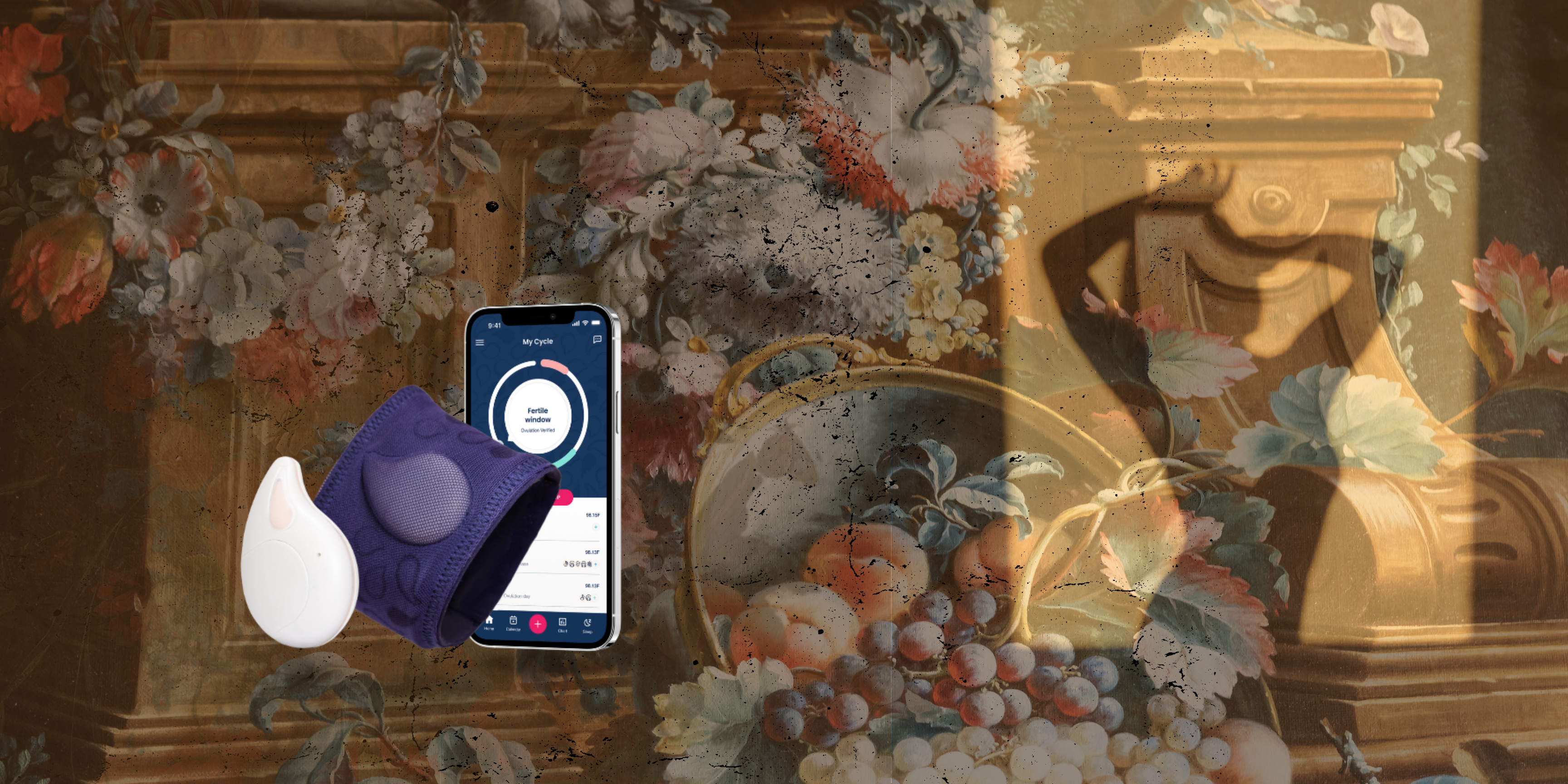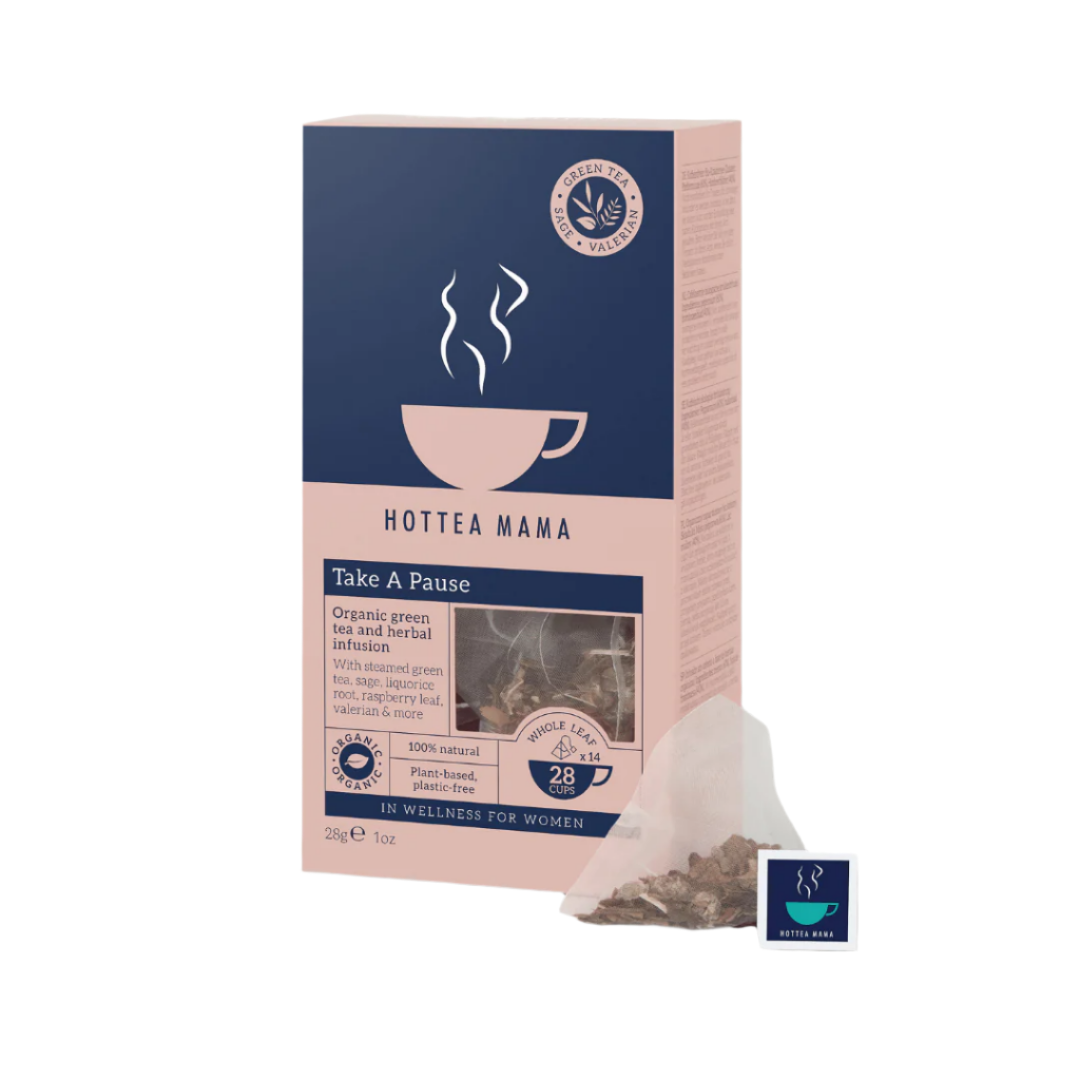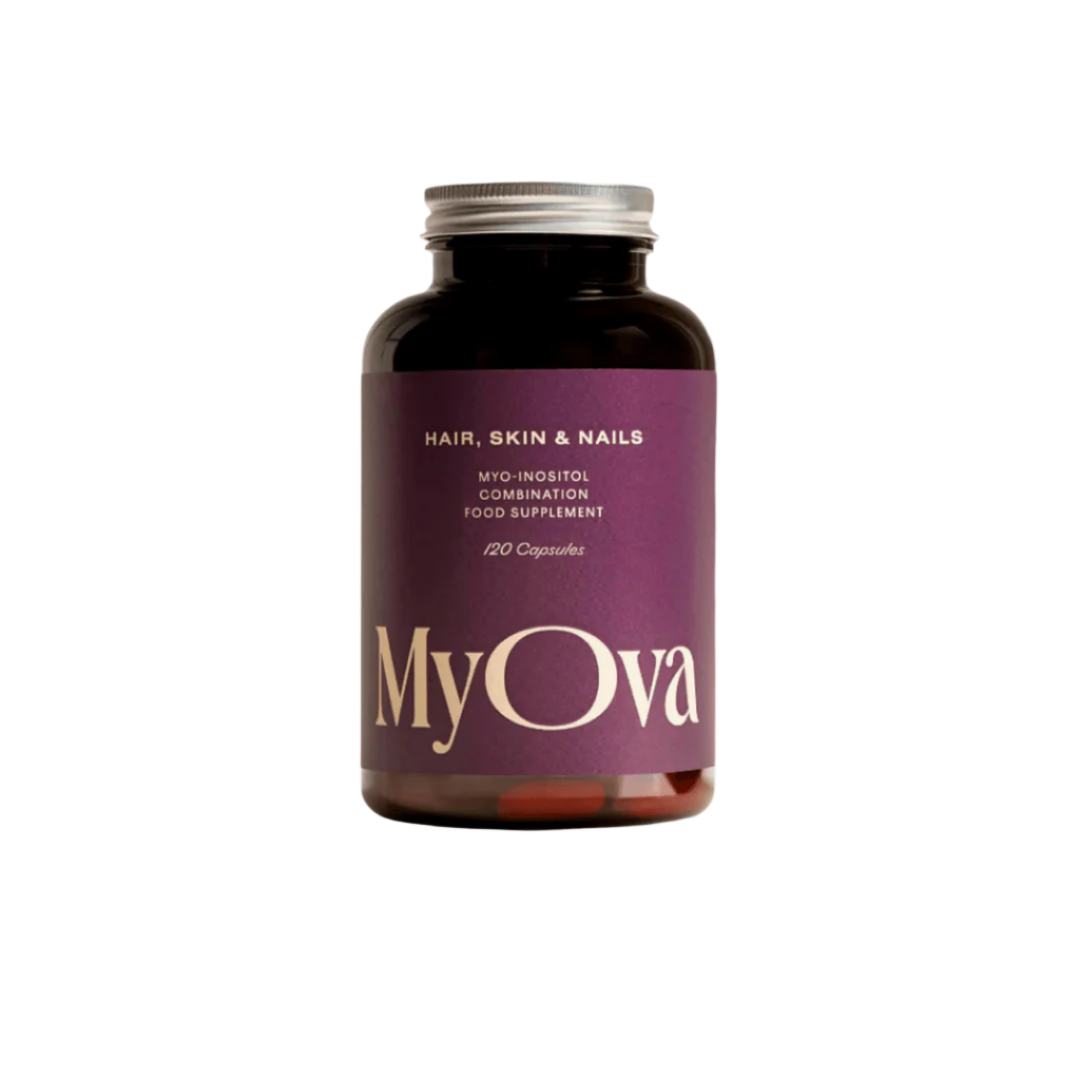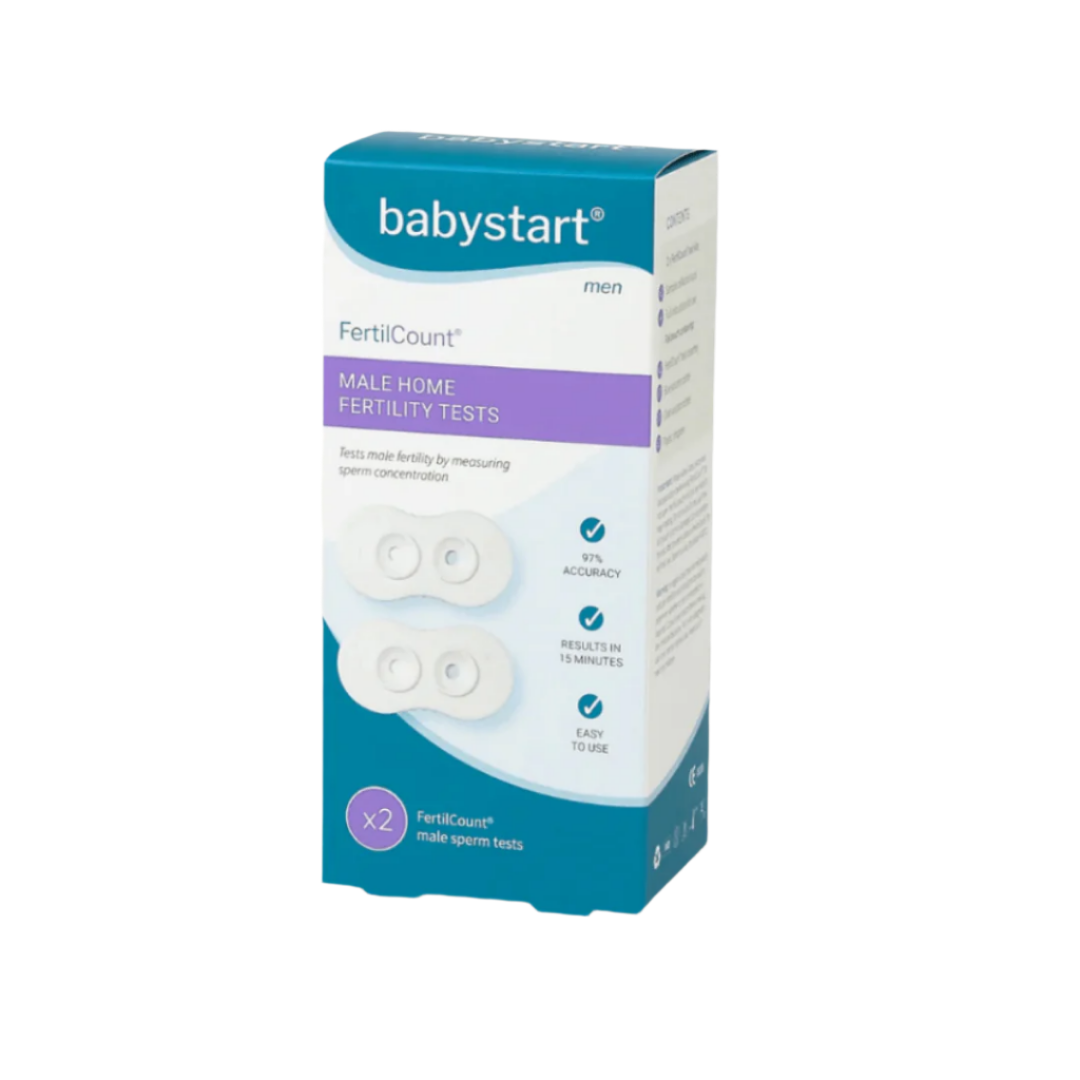




Fertility Monitoring
Tempdrop to monitor your fertility. Track your cycle whilst you sleep, understand your fertility window better
Tempdrop - BBT tracking while you sleep
Tempdrop - BBT tracking while you sleep
Track fertility effortlessly with the Tempdrop wearable ovulation tracker. Ovulation tracking has never been so easy.
Tempdrop brings the full fertility tracking solution to your smartphone. Whether you are looking to increase your chances of conceiving, or are practicing fertility awareness methods, the Tempdrop fertility tracker device is tailored to you.
Why Tempdrop?
- Non-invasive
- Stress-free temperature tracking without losing sleep
- All-in-one fertility charting app
- Get real-time fertile window insights
- Smart technology
- Delivering accurate data
- Suits irregular cycles
Sizing:
S/M fits 8.5"-15.5"/21.5cm - 39cm
L/XL fits 12.5"-18.5" /31.5cm- 47cm.
Please measure your arm before ordering your Temprdrop fertility tracker.
Please note: Orders shipped to Ireland femme will pay the customs charges.
Get 2 months of Tempdrop Premium for free! After that, it’s just £6.00/month.
Please note, once a Tempdrop device has been opened, it can’t be returned.
150 in stock
Share this product
How It Works
Fertility & ovulation tracking
Introducing Tempdrop - a wearable fertility monitor.
Tempdrop sensor & app: A lifelong companion.
Tempdrop Replacement Armbands
Tempdrop Replacement Armbands
Upgrade your Tempdrop experience with our comfortable and durable replacement bands. Designed with your convenience in mind, these bands ensure a perfect fit for every user while maintaining the seamless functionality of your Tempdrop device.
Key Features:
- Custom Fit: Adjustable straps to accommodate all arm sizes for a secure and comfortable fit throughout the night.
- Premium Materials: Soft, hypoallergenic fabric that’s gentle on the skin and built to withstand daily use.
- Easy Installation: Replace your old band in seconds with our hassle-free design.
- Breathable Design: Enhanced airflow ensures all-night comfort, even for sensitive skin types.
- Stylish and Versatile: Available in neutral tones to complement your Tempdrop device.
Whether you need a spare or a replacement, these bands are the perfect accessory to keep your Tempdrop functioning at its best. Stay consistent with your tracking without missing a beat.
Compatibility:
Exclusively designed for use with the Tempdrop wearable thermometer.
Keep your Tempdrop secure and comfortable with our high-quality replacement bands—because your wellness journey deserves the best.
15 in stock
Share this product
Ovulation tracking: Four Easy Steps
Step One: Wear before sleep
Before you go to sleep, press the drop-shaped button to turn on your Tempdrop sensor. Place the band on your upper arm and leave it on throughout the night.
Step Two: Sync whenever
Remove once you are up for the day and sync with the Tempdrop app whenever convenient.
Step Three: Add your symptoms
Track your symptoms to verify ovulation and learn about your cycle phases.
Step Four: Get results
View the chart and interpret your results. Upgrade to premium for automatic interpretation.

Recently on The femme Journal
We are here to help you with every stage of your fertility journey. Some of our recent blog posts may interest you.
BBT Wearables vs Thermometers: Accuracy, Benefits & the Symptothermal Method
Learn how to track your basal body temperature (BBT) to understand ovulation, monitor fertility patterns, and gain insights into your menstrual cycle. This guide covers tools, charting tips, and how combining BBT with methods like the Symptothermal Method can improve accuracy and support reproductive health.
Learn moreLearn Everything About BBT Basal Body Temperature Tracking
Learn how to track your basal body temperature (BBT) to understand ovulation, monitor fertility patterns, and gain insights into your menstrual cycle. This guide covers tools, charting tips, and how combining BBT with methods like the Symptothermal Method can improve accuracy and support reproductive health.
Learn more5 Tips for Coping with Infertility During the Holidays
Struggling with infertility? Discover 5 practical strategies to manage emotions, prioritise self-care, lean on support, and protect your wellbeing, helping you find peace and resilience during challenging times.
Learn moreEgg & Sperm Quality: The Hidden Key to Fertility Health
Fertility isn’t just about timing it’s about quality. During National Fertility Awareness Week, we’re shining a light on one of the most overlooked aspects of conception: egg and sperm health. Whether you’re actively trying to conceive or planning for the future, understanding how lifestyle, nutrition, and targeted supplementation affect reproductive cells can make a big difference. Why Egg Quality Matters A woman is born with all the eggs she will ever have around one to two million. Over time, that number and quality naturally decline. By the mid-30s, fewer eggs are released, and the likelihood of chromosomal abnormalities increases, which can affect conception and pregnancy outcomes. The good news? Egg quality can be supported with lifestyle changes and fertility-focused supplements. Tips to Support Egg Health Nourish your body: Antioxidants like vitamins C and E, selenium, and CoQ10 protect eggs from oxidative stress. Balance blood sugar: Whole foods, lean proteins, and healthy fats stabilise hormones and support ovulation. Reduce toxins: Limit alcohol, smoking, and environmental toxins like BPA. Prioritise rest & stress management: Chronic stress can impact ovulation and hormonal balance. Supplements like Ovum are designed to provide essential vitamins, minerals, and antioxidants to support egg quality and reproductive health. Femme Health Pre-Conception & Ovulation Support Supplement, formulated to nourish your body for conception. Sperm Health: More Than Just Count Sperm quality isn’t only about quantity it’s about motility (movement), morphology (shape), and DNA integrity. Research shows that sperm health can change within about three months, as that’s how long new sperm take to develop. Ways to Boost Sperm Quality Maintain a healthy weight: Excess body fat can affect testosterone and sperm production. Fuel up: Zinc, folate, vitamin D, and omega-3s support sperm quality. Stay cool: Avoid excessive heat from laptops or saunas on the lap area. Cut back on toxins: Smoking, heavy alcohol use, and recreational drugs can harm sperm DNA. The Power of Preconception Care Preconception health isn’t just for those ready to conceive today it’s a form of body literacy. Understanding your fertility empowers you to make informed choices about your health, family planning, and overall wellbeing. Consider fertility testing or consultations to learn more about: Ovarian reserve testing (AMH, FSH, AFC) Semen analysis Hormone balance panels Nutritional and lifestyle assessments Supplements like Ovum Femme Health Pre-Conception & Ovulation Support can complement these lifestyle and testing strategies, providing targeted nutrients to support both egg and sperm quality. Key Takeaway Both Egg & Sperm Quality are vital to conception, and both can be nourished through lifestyle, diet, and supplementation. Nutrition, stress management, and targeted vitamins play powerful roles in protecting reproductive health. This National Fertility Awareness Week, let’s normalise conversations around fertility because awareness is the first step to empowerment. Because fertility health is whole-body health.
Learn more


























